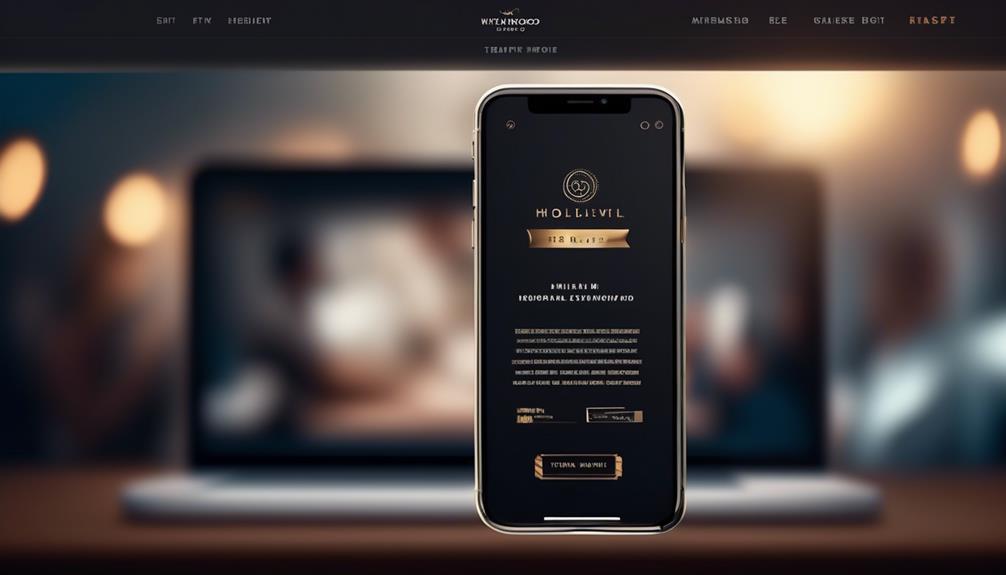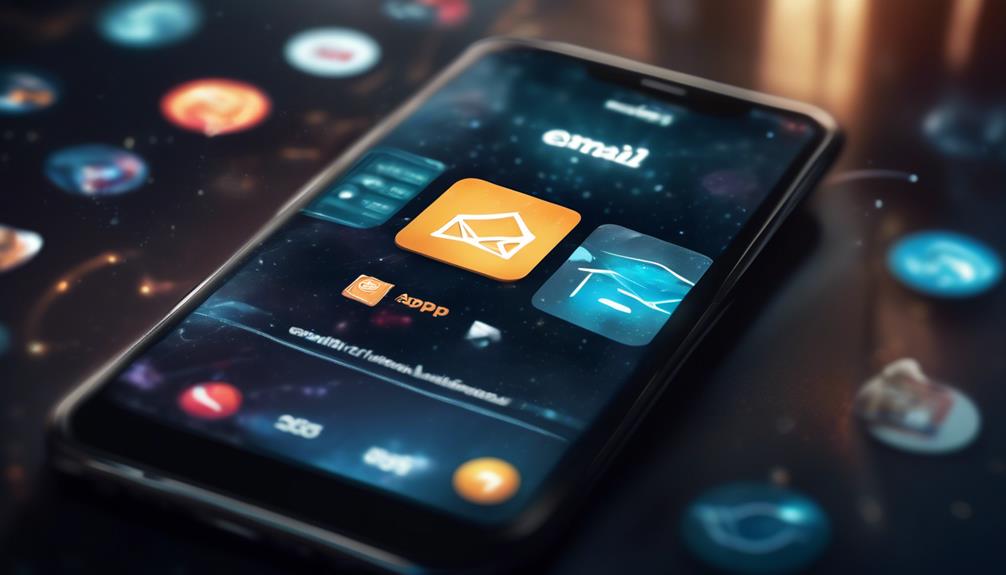Making sure our event runs smoothly depends on receiving RSVP confirmations promptly, something that we are fully cognizant of.
But how can we craft an RSVP confirmation email that not only captures attention but also prompts recipients to take action?
The key lies in striking the right balance between informative content and engaging design.
As we explore the essential components and structure of an effective RSVP confirmation email, we'll uncover strategies to boost response rates and enhance the overall event experience.
Join us as we unravel the secrets to crafting the perfect RSVP email template that leaves a lasting impression and drives attendee confirmations.
Key Takeaways
- The RSVP confirmation email template should incorporate personal touches to engage recipients and reflect the branding of the event or organization.
- It is essential to provide clear instructions on how to confirm attendance and specify the deadline for the RSVP response.
- The email should have a clear subject line stating the purpose of the email and event, and a personalized greeting to make the recipient feel valued.
- The tone of the RSVP email should be polite and inviting, with a clear call-to-action to prompt a response. Follow-up emails or reminders can help manage event attendance effectively.
Crafting the Perfect RSVP Email Template
Crafting the perfect RSVP email template requires attention to etiquette, clarity, and a personal touch to ensure a compelling and effective communication.
When crafting an RSVP email template, it's crucial to consider the tone and anticipation it sets for the event. The language used should convey a sense of sophistication and class, aligning with the overall theme of the invitation.
Clarity is key in communicating the necessary details for confirming attendance. The template should provide clear instructions on how to confirm, whether it's through a simple reply, a link to an RSVP platform, or any other method specific to the event.
Furthermore, personalization plays a vital role in making the RSVP email template more engaging. Each recipient should feel valued and appreciated, which can be achieved by incorporating personal touches such as addressing them by name and expressing enthusiasm about their attendance.
Additionally, the template should reflect the branding of the event or organization, with consistent use of logos, colors, and fonts for brand recognition.
In terms of the RSVP email subject, it should be attention-grabbing, sparking excitement and curiosity about the event.
Essential Components of RSVP Confirmation Email

When composing an RSVP confirmation email, it's essential to include clear and detailed event information to ensure a seamless and engaging communication experience for the recipients. Ensuring that the email contains all the necessary details can help recipients feel informed and excited about the upcoming event. Here are the essential components to include in an RSVP confirmation email:
| Component | Description | Example |
|---|---|---|
| Clear Subject Line | Clearly states the purpose of the email and the event | "RSVP Confirmation: Exclusive Wine Tasting Event" |
| Personalized Greeting | Adds a personal touch and makes the recipient feel valued | "Dear [Recipient's Name]," |
| Detailed Event Information | Includes date, time, location, dress code, agenda, and any other relevant details about the event | "Date: Friday, May 20th, 2022, Time: 7:00 PM, Location: Vineyard X" |
| RSVP Request | Clearly communicates the need for a response and provides instructions on how to RSVP | "Please confirm your attendance by replying to this email" |
| Response Deadline | Clearly specifies the deadline for the RSVP response, helping recipients understand the urgency of their reply | "Kindly RSVP by May 10th, 2022" |
RSVP Email Structure and Tone
Moving from discussing the essential components of an RSVP confirmation email, we now shift our focus to the structure and tone of RSVP emails, which play a crucial role in ensuring effective communication and prompt responses.
When crafting RSVP emails, it's essential to consider the following:
- Clear and concise format: Structuring the email in a clear and organized manner helps recipients understand the RSVP request and respond promptly.
- Polite and inviting tone: Setting the tone of the email to be warm and welcoming encourages recipients to feel excited about attending the event.
- Personalization: Tailoring the email to the recipient adds a personal touch and makes them feel valued, increasing the likelihood of a response.
- Call-to-action: Including a clear and prominent call-to-action prompts recipients to take the necessary steps to RSVP via email.
- Follow-up plan: Planning for follow-up emails or reminders ensures that recipients who may have missed the initial email have another opportunity to respond.
Mastering the structure and tone of RSVP emails is crucial in event planning and management. It's essential to send out effective RSVP confirmation emails that set the tone for a successful event and prompt timely responses.
Examples of Effective RSVP Confirmation Emails

Here are five examples of effective RSVP confirmation emails that demonstrate the key elements for successful event communication and prompt responses.
- Subject: 'RSVP for the Annual Charity Gala'
Dear [Recipient's Name],
You're invited to join us at the Annual Charity Gala on [Date] at [Time] at [Location]. Please RSVP via this email by [RSVP Deadline] to confirm your attendance. We'd love to have you there to support our cause. Let me know if you have any dietary restrictions. We look forward to seeing you at the event!
Best regards,
[Your Name]
- Subject: 'Confirm Your Attendance at the Product Launch Party'
Hi [Recipient's Name],
You're invited to our exclusive Product Launch Party on [Date] at [Time] at [Location]. Please let's know if you can make it by clicking the RSVP button below. Your presence is highly anticipated, and we can't wait to celebrate with you!
Warm regards,
[Your Name]
- Subject: 'RSVP: Networking Mixer'
Dear [Recipient's Name],
You're cordially invited to our Networking Mixer on [Date] at [Time] at [Location]. Please RSVP to this invitation email to confirm your attendance. We hope you can join us for an evening of valuable connections and great conversations.
Please RSVP by [RSVP Deadline].
Sincerely,
[Your Name]
- Subject: 'You're Invited! RSVP to the Annual Awards Ceremony'
Hi [Recipient's Name],
You're invited to the Annual Awards Ceremony on [Date] at [Time] at [Location]. Please confirm your attendance by replying to this event RSVP email. Let's know if you'll be able to join us to celebrate the achievements of our outstanding team.
Looking forward to your response.
Warm regards,
[Your Name]
- Subject: 'Please RSVP: Company Holiday Party'
Dear [Recipient's Name],
You're invited to the Company Holiday Party on [Date] at [Time] at [Location]. Please let's know if you can attend by replying to this email sample. Your presence will make the celebration merrier. Please RSVP by [RSVP Deadline].
Best regards,
[Your Name]
Managing Event Attendance With RSVP Emails
Transitioning from discussing effective RSVP confirmation emails, we now shift our focus to the crucial aspect of managing event attendance with RSVP emails. When it comes to managing event attendance with RSVP emails, there are several key practices to consider:
- Crafting Clear RSVP Requests: Clearly communicate the need for attendees to RSVP, including the deadline and preferred method of response.
- Providing Detailed Event Information: Ensure that the RSVP email includes comprehensive details about the event, such as date, time, location, and any special instructions.
- Personalizing the Invite: Tailor the RSVP email to each recipient, using personalized greetings and acknowledging their importance to the event's success.
- Sending Timely Reminders: Follow up with gentle reminders to prompt attendees to RSVP if they haven't already done so.
- Expressing Gratitude: Thank attendees for their response, whether it's a confirmation or a polite decline.
Managing event attendance with RSVP emails requires finesse and attention to detail, as it sets the tone for the event and contributes to its success. By following best practices for event RSVPs, hosts can ensure a smooth and organized guest list, creating a positive and memorable experience for all involved.
Frequently Asked Questions
How Do You Confirm an RSVP via Email?
We confirm an RSVP via email by promptly acknowledging receipt, expressing gratitude, and providing clear instructions for the next steps.
It's essential to ensure that the confirmation email is polite, informative, and reflects the event's tone and importance.
We also follow up with any additional event details or updates, reinforcing our commitment to a seamless and memorable experience for our guests.
How Do You Respond to RSVP if Attending?
Sure, when responding to an RSVP to confirm attendance, we typically reply with a polite and concise message expressing our gratitude for the invitation and our excitement to attend.
We also ensure to provide the requested details, such as the number of guests attending and any dietary preferences.
This helps the event organizers with their planning and ensures a smooth and enjoyable experience for everyone involved.
How Do You Write an RSVP Message?
We craft an RSVP message by ensuring a clear and captivating subject line, personalized greeting, detailed event information, clear RSVP request, and response deadline.
Our goal is to set the tone and anticipation for the event, so we use engaging and specific subject lines to spark excitement and encourage attendance.
Additionally, prompt and sincere acknowledgment of RSVP responses is essential to show our appreciation for the attendees' participation.
How Do You Write a Follow up Email for Rsvp?
We write a follow-up email for RSVP by expressing gratitude for their initial response and reiterating the event details with a sense of anticipation.
We aim to gently encourage those who haven't responded yet and provide a deadline if necessary.
Our message exudes warmth and enthusiasm, creating an atmosphere of excitement for the upcoming event.
We also offer assistance for any questions or concerns, ensuring a smooth and enjoyable experience for all guests.
Can the RSVP Confirmation Email Template be Adapted for Cancelling a Position?
Yes, the RSVP confirmation email template can be adapted for cancelling a position. By utilizing a professional position cancellation template, you can effectively communicate the withdrawal of an accepted job offer or a resignation from a current role in a clear and professional manner.
Conclusion
In conclusion, we've learned that crafting a well-designed RSVP confirmation email template can greatly enhance event communication and increase attendance rates.
By paying attention to the essential components and tone of the email, and by using examples of effective RSVP confirmation emails, we can effectively manage event attendance.
It's important to remember that a carefully crafted RSVP email can make a significant difference in the success of an event.









